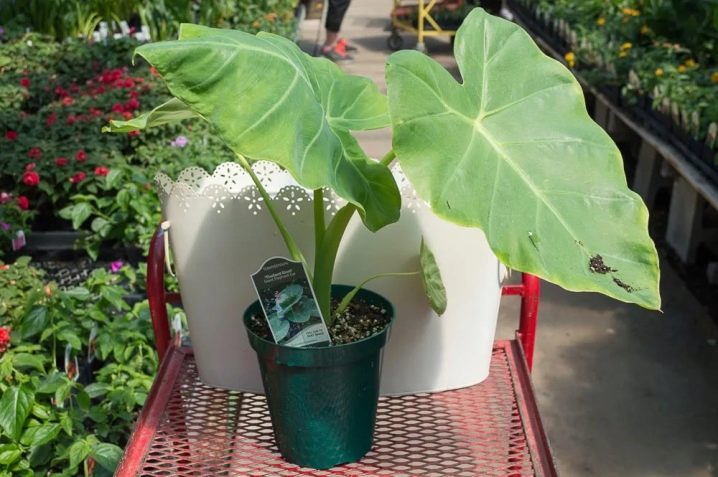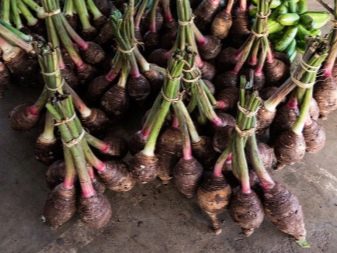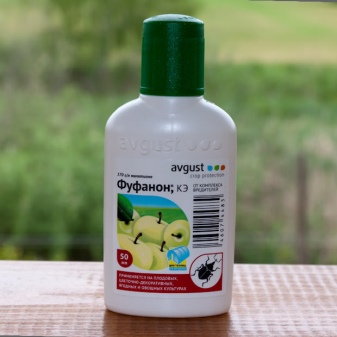Taro: description and cultivation

Taro is a rather unusual tropical plant for our area. It is famous for its huge leaves, for which it is sometimes called "elephant ears".

Description of the plant
Taro is a perennial plant that belongs to the aroid family. The root is tuberous, brown-gray. Taro is often compared to potatoes because it contains most of the starch and nutrients. But it should be understood that these tubers should be eaten only after proper heat treatment.
The plant has no stem, huge leaves stick out right from the ground, which can reach up to half a meter in length. They are considered the pride of taro, because they have a beautiful color - there are all tones of green interspersed with other colors. If you grow taro at home, then its flowers can be seen extremely rarely, but in fact they exist. They have a sandy color, and after pollination, red and orange berries appear, which are filled with seeds.

Types of taro
There are about 8 species of this plant that are great for growing in greenhouses. But quite often this plant can be found as indoor plants.
The most popular and common types are the following.
- Giant - the largest representative of the aroid family in size. Its height can reach three meters, and the length of the leaves in most cases reaches 70-80 centimeters. The color of the leaves is dark green with many yellow veins.

- Edible or Ancient. The leaves and tubers of this plant are widely used to prepare a wide variety of dishes. The light green leaves can grow up to 1 meter long, and the largest tuber can weigh about 5 kilograms. The plant can often be seen in mountain ranges, often at an altitude of 700 meters above the water. It is often grown in greenhouses, where high humidity and warmth are observed.


- Deceiving - this is the kind that we can meet as a houseplant, thanks to its compact size. Unlike previous species, its leaves reach a size of only 25 centimeters and have a green-white color. Occurs on the slopes of the Himalayas.

- Water - occurs on the shores of fresh waters and is quite normal about flooding. Its leaves are also small - 30-40 centimeters.

- Taro "Fontanesia" - almost does not form tubers. Its leaves are glossy with a dark green color.

Reproduction methods
Taro breeds in several ways:
- transplanting tubers;
- separation of roots;
- growing from seeds.
To propagate a flower with tubers, they must be separated from the adult plant and planted in new nutrient soil. In order for the plant to take over, conditions are created for it, close to those of a greenhouse. The cover can be removed after 10-14 days.
When dividing the root, several growth buds should be left on the divide. You need to cut the root with a sharp knife and sprinkle generously with crushed coal. Then transplant it into moist soil and after a couple of weeks the plant will begin to release new leaves.
The method of seed propagation is very difficult and ineffective. The seeds are planted in pots with moist peat to a depth of about 6 mm. The container must be covered with glass or transparent film and moved to a well-lit place with a temperature of + 21-24 ° C.After 2-3 weeks, the plant should emerge.



It is advisable to engage in transplanting and reproduction of taro in the summer, in the country. Moreover, it is very good for a flower to be not in pots in the summer, but buried in the ground.
The main thing is always to remember that when planting and transplanting a plant, all manipulations should be carried out carefully and with gloves.


Care rules
Home care is very simple. It is necessary to create the most convenient place for it and water it quite often, because in nature this plant is constantly in contact with water. For good growth, it is advisable to allocate a place of at least one square meter. Lighting should be bright, but not with direct sunlight, although taro tolerates heat well. This plant is very fond of warmth. The ideal temperature in summer is from + 24 ° C to + 28 ° C, and in winter - not lower than + 14 ° C, otherwise the leaves will begin to dry out and fall off.
The plant should be watered frequently and the humidity should be monitored. In winter, it is recommended to leave taro in rest mode, watering can be reduced, but not to allow the soil to dry out.

In the spring, it is recommended to move the flower to free soil, for example, to a flower bed, because a lot of space is needed for such a rather large plant. And leave in clean air until the first cold weather.
Throughout the year, the plant needs to be fed with suitable trace elements: in spring and summer - 1-2 times a month, in autumn and winter - several times during the entire period. It is not necessary to transplant taro often, it is enough just to make sure that the rhizome does not stick out above the ground. For her, choose a suitable flowerpot with a diameter of 50-60 centimeters. In such a pot, she will feel great and spacious. To make the pot heavier, it is enough to put 2-3 stones on the bottom, since the plant is massive and can fall.


Precautionary measures
Taro is a poisonous flower. If its juice gets on the open areas of human skin, it leaves a serious burn. It is necessary to ensure that the leaves do not fall into the hands, and even more so into the mouths of children and animals. If you eat a leaf of taro, you can get throat swelling. In such cases, you need to urgently seek help from specialists.
And although this plant is considered edible, it can only be eaten after boiling or frying.

Pests
The most dangerous pests for a flower are spider mites and whiteflies.
When taro is infected with a spider mite, if you do not start treating the plant in time, it can suck out all the juices from it. It is necessary to spray with an insecticide ("Actellik", "Malathion").
Whitefly is a small light green butterfly with snow-white wings. She belongs to pests that are very difficult to control. Therefore, it will be necessary to process not only one plant, but also everything that is nearby: a pot, a windowsill, glass and other plants. You can use "Fufanon", "Mospilan" or "Confidor".


Composition and use of edible taro for food
Edible taro is famous for its nutritious tubers. It is also popularly called "Taro" or "Chinese potatoes". The huge content of fiber in "Taro" creates a full-fledged feeling of satiety. The calorie content of such a product per 100 grams is 113 kcal. It contains some micro and macro elements such as magnesium, calcium, copper and phosphorus, manganese, zinc and iron. Taro tastes like asparagus.
Both tubers and flower leaves are added to food, but only after heat treatment. "Taro", like rice, in Asian countries was grown in water-filled fields. At home, taro is prepared as a side dish for fish and meat, added to a variety of salads. For example, in Bangladesh, fruits are boiled along with shrimp and fish, in China, they are mashed and served with meat. Thais are very fond of making chips from "Chinese potatoes". And, in general, no holiday in Asia can do without this product. Sweet cakes, which are made with tubers, are popular during the Chinese New Year celebrations.
For a long time, this product was practically not used in Europe, but recently interest in it has renewed, since it is now considered an exotic delicacy.


You can learn more about taro from the video below.























The comment was sent successfully.